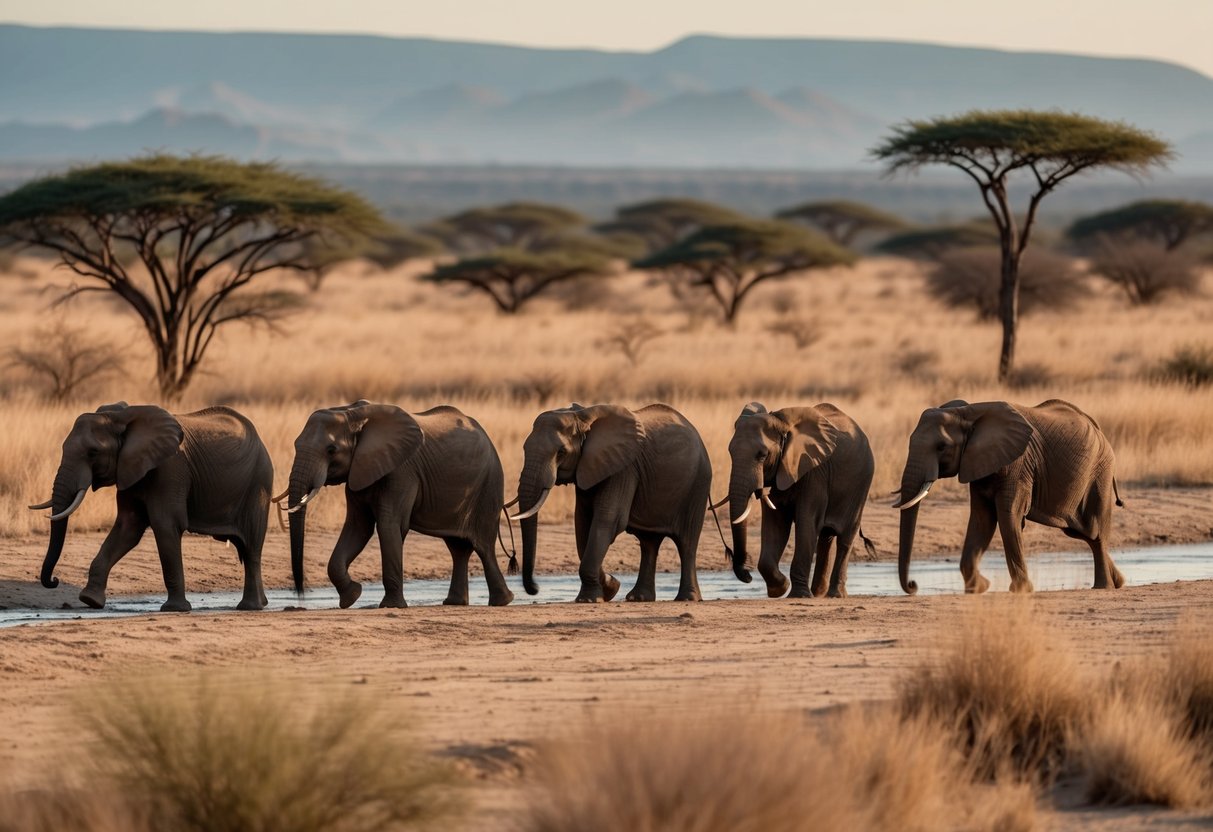
Journey into the heart of Kenya with a safari through Samburu, a region less traveled but rich with natural beauty and wildlife. Samburu National Reserve stands out not just for its breathtaking landscapes but also as a sanctuary for rare and unique animal species. This untouched wilderness offers travelers a chance to witness wildlife in its most authentic setting, making it a dream destination for nature enthusiasts.
The allure of Samburu lies in its remoteness, offering an escape from the crowds and a closer connection with nature. Visitors can see everything from the striking Grevy’s zebra to the reticulated giraffe, each adding to the distinct character of the reserve. With the Ewaso Ng’iro River as a central feature, the area is a lifeline for wildlife, drawing animals to its banks for a chance to drink and cool off.
Whether exploring the rugged terrains or witnessing the vibrant cultures of the Samburu people, there is an adventure waiting at every corner. The reserve provides unique insights into Kenya’s unparalleled biodiversity and traditional lifestyles. A safari here offers an enriching experience that combines natural grandeur with cultural depth.
Exploring Samburu National Reserve
Samburu National Reserve in Kenya offers a unique blend of diverse landscapes and rich biodiversity. It is a perfect destination for those seeking to witness rare wildlife species and explore stunning natural beauty.
Geography and Landscape
Nestled in the northern part of Kenya, Samburu National Reserve showcases a dramatic landscape shaped by volcanic activity. The Ewaso Nyiro River cuts through the reserve, providing a vital water source, creating an oasis amidst the arid savannah. Rolling plains and rugged hills dominate the topography, offering panoramic views that captivate visitors. The region experiences a hot and dry climate, making the riversides lush and the higher elevations cooler.
The reserve’s geographical diversity contributes to its charm, with areas ranging from riverine forests to acacia woodlands. This variety supports a robust ecological system and sustains the diverse wildlife populations. The semi-arid environment, paired with the breathtaking scenery, makes the reserve a picturesque haven for adventure seekers and nature enthusiasts alike.
Flora and Fauna
Samburu’s ecological richness is evident in its diverse flora and fauna. It is home to several endemic species, including the majestic Grevy’s zebra and the unique long-necked gerenuk. The reserve is famous for its populations of elephants, and visitors often spot these gentle giants near the Ewaso Nyiro River. This area is also a haven for predators, including lions and leopards, making it popular for big-cat enthusiasts.
The abundance of wildlife is complemented by a variety of plant species. Riverine forests thrive along the waterways, sheltering numerous bird species and smaller mammals. The distinct and fascinating landscape supports both predator and prey, providing a balanced ecosystem rarely seen elsewhere in Kenya.
In addition to its natural wonders, the reserve is also a cultural hub, home to the Samburu tribe. This meld of environment and culture adds to the reserve’s allure, making it a compelling destination for those eager to explore Kenya’s untouched wilderness.
The Wildlife of Samburu
In the heart of Kenya, the Samburu National Reserve is home to a diverse array of wildlife, featuring unique species and notable predators. Enthusiastic birdwatchers will find a variety of species not seen in other parts of the country.
Unique Species in Samburu
Samburu is renowned for its unique wildlife. Among them is the gerenuk, an antelope with an elongated neck, known for its distinctive stance on two legs as it browses on trees. The Grevy’s zebra, with its narrow stripes and large ears, roams the savanna in small groups. Another exceptional sight is the reticulated giraffe, with its striking, geometrically patterned coat. The Somali ostrich can also be found here, distinguished by its blue-grey neck and thighs, which is a unique adaptation to the region.
The dry yet rich landscapes serve as a haven for these species, supported by the Ewaso Ng’iro River, which provides essential water resources. The reserve’s relative isolation contributes to the preservation of these species, making it a focal point for travelers seeking an authentic wilderness experience.